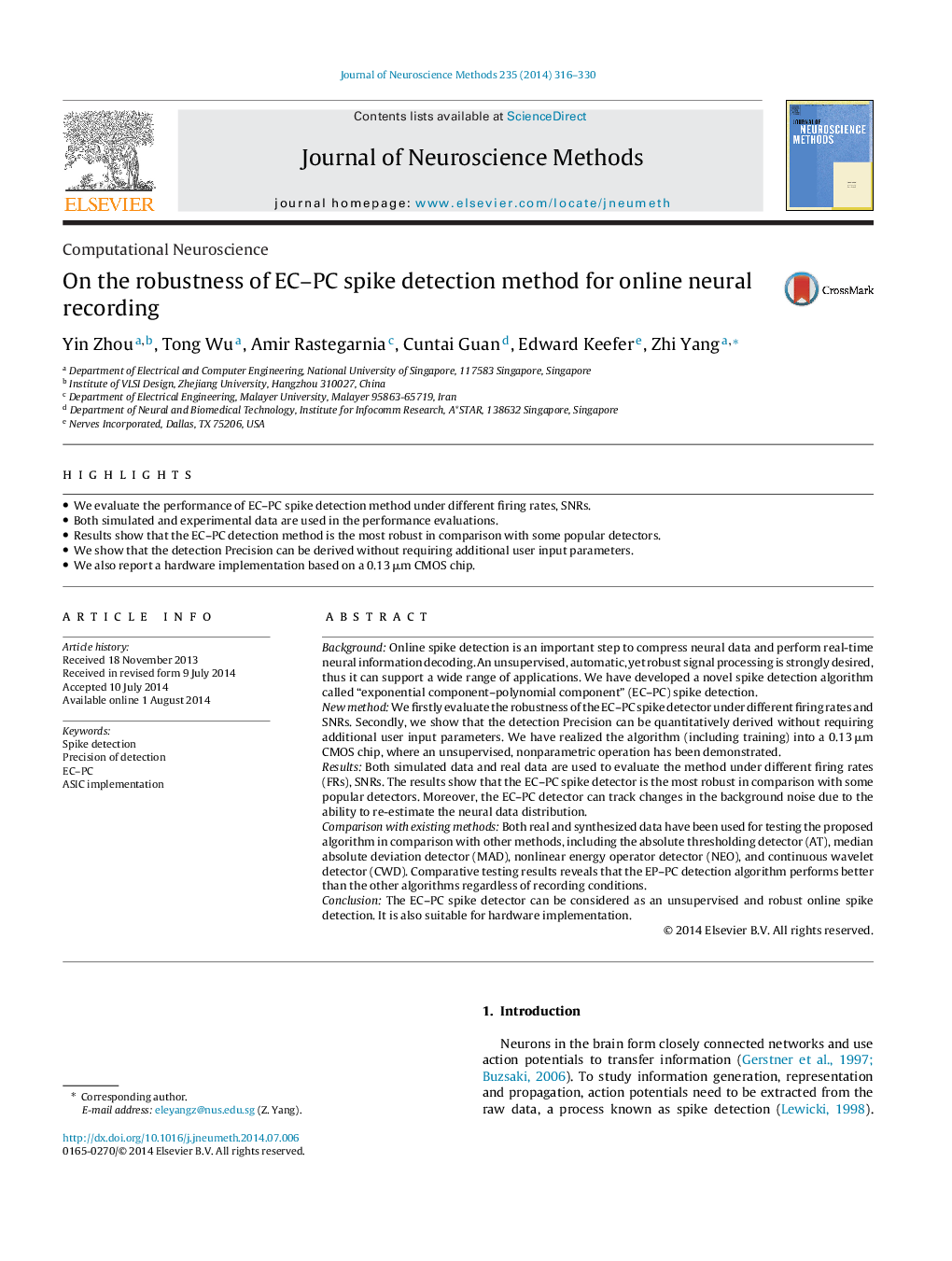| Article ID | Journal | Published Year | Pages | File Type |
|---|---|---|---|---|
| 6268661 | Journal of Neuroscience Methods | 2014 | 15 Pages |
â¢We evaluate the performance of EC-PC spike detection method under different firing rates, SNRs.â¢Both simulated and experimental data are used in the performance evaluations.â¢Results show that the EC-PC detection method is the most robust in comparison with some popular detectors.â¢We show that the detection Precision can be derived without requiring additional user input parameters.â¢We also report a hardware implementation based on a 0.13 μm CMOS chip.
BackgroundOnline spike detection is an important step to compress neural data and perform real-time neural information decoding. An unsupervised, automatic, yet robust signal processing is strongly desired, thus it can support a wide range of applications. We have developed a novel spike detection algorithm called “exponential component-polynomial component” (EC-PC) spike detection.New methodWe firstly evaluate the robustness of the EC-PC spike detector under different firing rates and SNRs. Secondly, we show that the detection Precision can be quantitatively derived without requiring additional user input parameters. We have realized the algorithm (including training) into a 0.13 μm CMOS chip, where an unsupervised, nonparametric operation has been demonstrated.ResultsBoth simulated data and real data are used to evaluate the method under different firing rates (FRs), SNRs. The results show that the EC-PC spike detector is the most robust in comparison with some popular detectors. Moreover, the EC-PC detector can track changes in the background noise due to the ability to re-estimate the neural data distribution.Comparison with existing methodsBoth real and synthesized data have been used for testing the proposed algorithm in comparison with other methods, including the absolute thresholding detector (AT), median absolute deviation detector (MAD), nonlinear energy operator detector (NEO), and continuous wavelet detector (CWD). Comparative testing results reveals that the EP-PC detection algorithm performs better than the other algorithms regardless of recording conditions.ConclusionThe EC-PC spike detector can be considered as an unsupervised and robust online spike detection. It is also suitable for hardware implementation.
